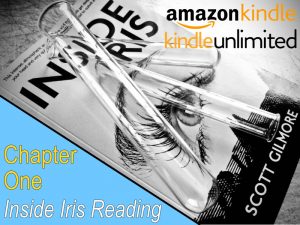Tips For Writing Effective Dialogue In A Fiction Novel Or A Script / Screenplay
It Is Essential To Write Effective Dialogue
As a fiction author who had his roots in writing drama and scriptwriting, I am regularly sucked in by a screenwriter who can write effective dialogue. When we see scything dialogue between two or more characters, we are a fly on the wall between them as they act out a scene before our eyes. We feel the narrator has been removed from the piece of fiction, and the characters are there unfiltered for us to see.
Buried among many writing tip queries online is the question of how to write effective dialogue. When considering creative writing blogs to write, I always try to write about writing topics that could be of use to beginning writers as well as more experienced writers. No doubt, creating realistic dialogue that can grasp and maintain the attention of a reader or audience is a skill that needs practice.
Like you, I want to write fiction well and come up with story ideas for writers can help shape my craft as a writer. The process of creating, planning, moulding, writing and then editing a piece of fiction is a daunting process for millions of potential authors out there. Trying to ease the steps taken to write convincing dialogue between characters within your story, can get you one step closer to finishing that first book.
As a fellow fiction writer and young adult author, I like to share my story writing experiences and what has worked for me throughout the planning and writing my debut novel, Inside Iris. Whether you are writing as a beginner or an experienced published author, I feel we can all learn from one another.
By sharing our craft, our creative writing process, and how we work as artists and creatives, we can:
- Help to hone our process further;
- Get inspiration from fellow writers;
- Feel part of a wider writing community;
- Feel less alone in a very lonely profession, hobby or past time.
Yes, there may be processes you disagree with, and that’s fine. The method of exploring those processes is where we can learn as fiction authors and see whether we can adapt what we do when writing. We need to remember that the process is for us to write fiction better or write fiction well. Part of that is writing effective dialogue that our readers or viewers can believe in!
Read this blog article to see what you can learn and please email me at scott@sgfiction.co.uk with your ideas, processes and craft as a writer. I am eager to hear from my contemporaries and fellow authors, writers, poets, playwrights and screenwriters!
Read the following tips for writing effective, lifelike dialogue below and see whether you can use some of them when writing stories of your own. Do you already try some of these? Please share and let’s start a discussion!
1. Exercise One – Role Play
When I was at Queen’s University in Belfast studying Creative Writing, I used to get the bus into the city centre and walk up to university for class on a Friday morning. No matter what the weather was, I would set this as a routine to carry out a creative writing exercise that I still use to this day.
Some fiction authors, dramatists and screenwriters out there already do this writing exercise, and fellow creative writers I have spoken to in the past have even found this embarrassing to admit to. Regularly, I have seen many creative writing blogs share the story writing tip of role-playing the conversations between characters, whether inside your head or even out loud.
Some beginner writers can find this approach somewhat odd and possibly even crazy to do, but it works! I can vouch for this one personally, friends, as I would walk through Belfast city centre and let a particular piece of dialogue run through my mind over and over. I would allow this to play out from one or more points of view before deciding on the best, most effective and most organic dialogue. When I got up to the Seamus Heaney Centre at Queen’s University, I would write up my favourite piece of dialogue and feel as though I had achieved something before 9 am that morning.
Allowing my characters to share their thoughts, divulge information about themselves and even argue would help craft genuine dialogue that would fit within my play or script easier. Throughout this master’s degree course at Queen’s University, I was able to write so much, and the dialogue between characters all flowed organically. I feel it was because if this routine of walking and allowing my characters to role play and thrash things out in my mind so often.
What can we do?
- Write for fun and allow your characters to talk often and talk freely;
- Accept the dialogue they share and write it down as it is. The dialogue belongs to the character, not you – so don’t edit it;
- Enjoy the process, not the outcome. Your characters need to form, and their voice needs to get stronger, like yours as an author;
- Allowing the characters to have conversations by giving yourself thinking time (e.g. walking, running, lying down in peace) can make your dialogue writing process stronger;
- Get it down and fix it later! That’s what redrafting is! Remember that in real life, we rarely talk perfectly, so why should our character’s dialogue be perfect?

How much do you feel effective dialogue adds to a piece of fiction or drama? Comment below.
2. Exercise Two: Read Good Plays
This exercise may not be something that an aspiring fiction author would consider, but it does have its merits. For many years, I have loved reading plays from the greats. These playwrights are experts in the use of excellent dialogue, and authentic dialogue to tell a story. Their use of spoken word to tease out the intricate details of a story and plot before a live audience is extraordinary.
The goal I’ve had to become a professional playwright or author has been there since I was 18 years old, and I’m still not there yet at 35! However, I have taken many valuable writing lessons and creative writing skills from those formative years before and after my course at Queen’s University. One of those lessons I still use to this day is to read the best playwrights and study how they allow their characters to interact without the use of a narrator to fill in the gaps between spoken word.
These master playwrights embody the phrase – ‘show, don’t tell.
As I am usually wrapped up in my dystopian fiction world of Inside Iris or Hexingham, I see it as a welcomed break to delve into the worlds created by some of my favourite playwrights of the twentieth century. When I slip out of my science fiction setting, I like to settle into a world anchored in the solidity of the real world.
Playwrights like Arthur Miller, Harold Pinter, Sam Shepard, and David Mamet are just some of the dramatists I regularly read to give myself a continued education into the craft of creating authentic dialogue between characters.
What can we do?
- Read drama for fun as well as an education into the use of organic dialogue;
- Read the characters’ lines aloud! Remember, plays are dramatic art and listening to words ring out loud helps develop an understanding of the spoken word;
- When writing your dialogue, read it aloud without narration. Why not record the dialogue on your smartphone and listen to it. You never know what you’ll discover;
- Learn from the masters. My list has worked for me. Look at this list of the best dramatists of the 20th century and find someone who speaks to you.
- Listen to conversations in public. I know this is technically eavesdropping, but the best place to hear real-life dialogue is to listen to real-life dialogue in the world around you.

Why not allow the characters to share conversations in your head as you go about normal, everyday tasks?
3. Exercise Three: Slang is Okay
In this example, we are talking about writing effective and organic dialogue, so for the spoken word to sound as though it comes from the real world, we need to include realistic textures and even slang. We could also try to focus away from our niche of dystopian fiction, young adult fiction, literary fiction or fan fiction!
When focusing on dialogue as a target, we need to ensure that nothing else distracts us from that goal. Even if we include some narrative description within our piece of writing, remember that the focus is to write conversations that sound real.
Many writers have used the term ‘write what you know’, and I whole-heartedly agree with them when getting a grasp on a real-life, effective dialogue between two characters set in the real world. If you’re a science fiction author, whose characters are living lightyears away, you can break the rules and get away with it. However, you need to be aware of the rules you are breaking, and those conventions are set within the world that you know – Earth.
I like to write random short dialogues between characters set in Belfast because that is where I grew up, and it is the world that I know in-depth. If writing real-life conversation, I think adding actual slang terms, colloquialisms and knowledge is key to developing an organic dialogue. This approach can also give the play or novel a definite place in time and space, and that can raise a piece of writing to the next level for a reader or audience member!
Remember that creative writing and creative writing exercises are supposed to be just that. They allow us to take that break outside the fictional world we are creating and can even give us a new, clearer perspective on your book or screenplay.
What can we do?
- Return to where you know and are comfortable. Sit there and listen to the conversations and the words used between the people who live in that environment;
- Transcribe a random conversation of your own using some of the slang terms and colloquialisms between the two or more people in your fictional dialogue;
- Remember that writing effective and believable dialogue is your goal so write the piece without narrative, descriptive passages between spoken word;
- When revisiting the dialogue later, rewrite the piece by adding a narrative description between the spoken lines. Do this without changing the spoken words – they do not belong to you – they belong to the characters and are part of an organic dialogue.
- Be varied in your approach – switch up the exercises you do. Why not write from a younger or older character’s point of view next time.

Click on the image to watch Scott’s YouTube channel reading of chapter one of his debut Kindle novel, Inside Iris.
Why Write Effective Dialogue?
Writing ideas and tips to write effective dialogue as a fiction author or screenwriter are all over the internet and YouTube. Again, there are no magic pills for authors and playwrights to be able to write best-selling fiction novels or award-winning plays on the West End.
I hope there is advice, and there are processes that you agree with in this creative writing blog. The process of exploring methods and ideas is how we can learn as fiction authors, and we can write better, more effective dialogue as a result. We need to remember that the process is for us to write the best novel or drama possible, but also to enjoy it too!
If you enjoyed this blog article, please email me at scott@sgfiction.co.uk with your creative writing ideas, processes and craft as a fiction writer, playwright or screenwriter. I am eager to hear from my contemporaries and fellow authors, writers, poets, playwrights and screenwriters!



Brilliant advice. Very helpful for an aspiring like me.
Just keep writing, Sarah. If you get closer to finishing a piece, mail me and I can feature you on the site!